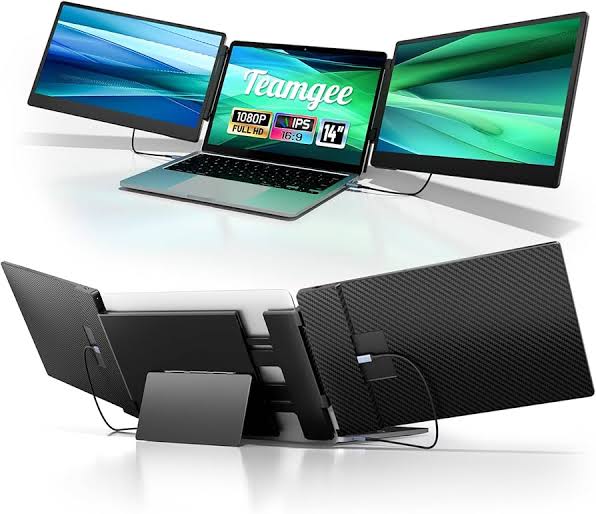The Ultimate Guide to Smart Fitness Equipment for 2025: As we step deeper into 2025, the fitness industry is continuing its digital evolution, with smart fitness equipment leading the charge. Gone are the days of analog machines and static workouts. Now, AI-powered personal trainers, app-integrated machines, and real-time biometric tracking are transforming how we approach health and exercise.

This guide explores the top trends, technologies, and devices in smart fitness equipment to help you build a futuristic home or commercial gym setup.
What is Smart Fitness Equipment?
Smart fitness equipment refers to exercise machines and devices embedded with sensors, internet connectivity, artificial intelligence, and app integration. These features allow for data collection, personalized training programs, real-time feedback, remote coaching, and often social sharing capabilities.
Unlike traditional gym tools, smart equipment doesn’t just let you work out—it teaches, corrects, and evolves with you.
Key Benefits of Smart Fitness Equipment
- Personalized Workouts: AI-powered equipment adapts to your fitness level, goals, and progress.
- Data-Driven Insights: Track metrics like heart rate, reps, range of motion, and calories in real-time.
- Remote Coaching: Connect with trainers or classes via live streaming or on-demand content.
- Motivation & Gamification: Challenges, leaderboards, and VR-based experiences keep workouts engaging.
- Compact & Space-Saving: Many modern devices are designed for urban homes with limited space.
Top Smart Fitness Equipment in 2025
1. Smart Treadmills
- Notable Brands: Peloton Tread, NordicTrack X32i, Echelon Stride-5S
- Features: Large touchscreen displays, automatic incline adjustment, interactive workouts, heart rate integration, and safety auto-stop.
- New in 2025: Voice control, running gait analysis, and virtual terrain simulations powered by AI.
2. AI-Powered Strength Training Machines
- Examples: Tonal, Vitruvian Trainer+, Tempo Move
- Functionality: Digital weights using electromagnetic resistance, automatic form correction, and customized strength training programs.
- Innovation: These systems track your every move using 3D sensors and provide instant feedback on posture, form, and performance.
3. Connected Rowing Machines
- Top Models: Hydrow Wave, Ergatta, Aviron Strong Series
- Why They’re Popular: Full-body workouts with gamified or scenic virtual rows.
- 2025 Upgrades: Improved water-simulation algorithms, built-in coaches, and group rowing competitions.
4. Smart Bikes
- Leading Brands: Peloton Bike+, Wahoo KICKR Bike, Bowflex VeloCore
- Smart Features: On-screen instructors, automatic resistance control, leaderboard interaction, dual-mode for real rides.
- Cool Additions: VR headset compatibility and metabolic rate feedback for energy-efficient training.
5. Wearables & Smart Accessories
- Popular Devices: WHOOP 5.0, Apple Watch Ultra 2, Oura Ring Gen 4
- Purpose: Continuous monitoring of heart rate, sleep, recovery, stress levels, and performance.
- Integrations: Sync with home gyms, treadmills, and apps like Strava or MyFitnessPal for seamless data flow.
6. Smart Mirrors
- Flagship Products: Mirror by Lululemon, Fiture Mini, Echelon Reflect
- Utility: Blends into your home as a mirror, turns into a workout screen during sessions.
- Unique Features: On-screen form corrections, trainer shout-outs, and AI workout suggestions based on performance history.
7. Virtual Reality (VR) Fitness
- Top Picks: Meta Quest 3, Icaros Cloud, FitXR
- Experience: Gamified workouts in immersive worlds—dance, boxing, HIIT, and even yoga in VR.
- 2025 Innovations: Haptic feedback suits, body heat sensors, and calorie burn estimates with higher accuracy.
READ ALSO: Why Modular Gadgets Are Gaining Popularity in 2025
Choosing the Right Smart Fitness Equipment
When selecting smart fitness gear in 2025, consider:
- Your Goals – Strength training? Cardio? Recovery? Choose based on purpose.
- Space – Some devices (like smart mirrors or foldable treadmills) are ideal for small apartments.
- Budget – Smart machines range from $300 to $5,000+. Subscription costs may apply.
- Ecosystem – If you already use Apple Health or Fitbit, look for compatible devices.
- User Profiles – Need something the whole family can use? Choose machines with multiple accounts and AI learning.
Smart Gym Ecosystems
More companies are creating fully integrated smart gym ecosystems:
- Apple Fitness+: Syncs workouts across Apple devices and wearables.
- Peloton: Offers bike, tread, row, and app-based workouts with one membership.
- iFIT: Compatible with NordicTrack and ProForm gear, offers scenic routes and global trainers.
These ecosystems provide a holistic approach to health, blending exercise, mindfulness, nutrition, and rest.
The Future of Smart Fitness (Beyond 2025)
- AI Trainers: Soon, virtual personal trainers will guide your entire fitness journey using predictive analytics.
- DNA-Based Workouts: Programs tailored to your genetic makeup for max efficiency.
- Emotion-Aware Equipment: Devices that adapt workouts based on your mood or stress levels via biometric scans.
- Home Fitness Pods: Fully automated home gyms with robot arms, temperature control, and voice-driven personalization.
FAQs
Do I need a subscription to use smart fitness equipment?
Most devices work without a subscription, but you’ll miss premium content, live classes, and personalized insights. Popular services like Peloton, iFIT, and Tempo require monthly fees ($20–$45/month).
Can beginners use smart fitness gear?
Absolutely. These devices often start with beginner-friendly programs and auto-adjust resistance or difficulty. They’re perfect for learning correct form and staying motivated.
How secure is my fitness data?
Leading brands use encryption and privacy protocols, but always check the data policy. You can usually opt out of sharing with third parties.
Is smart fitness equipment worth the investment?
If you value convenience, data-driven workouts, and ongoing motivation, yes. It can replace a gym membership and offer more tailored fitness solutions.
What if I don’t have a lot of space?
Look into compact solutions like foldable treadmills, wall-mounted systems (Tonal), or smart mirrors. Many devices are now designed with minimal footprint in mind.
Can I use multiple devices together?
Yes. Many ecosystems let you sync your wearable with a treadmill, bike, and fitness app. For example, your Apple Watch can track workouts done on a Peloton.


